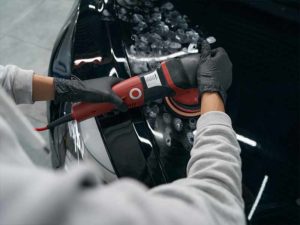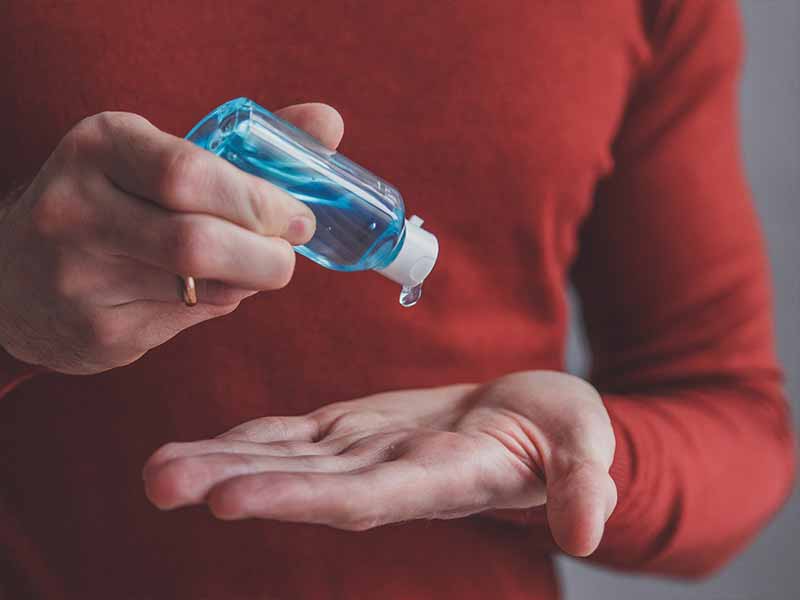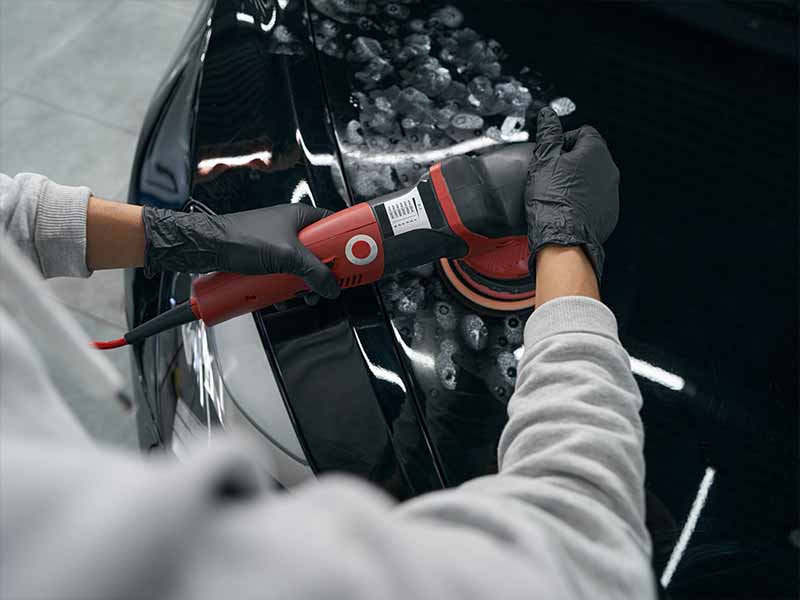Table of Contents
A big part of owning a buffer entails picking the right pad. Each detailing project starts by understanding which pad is the right one to use and equipping it. If you didn’t know, microfiber and foam pads are very different. If you don’t know which one to use, you came to the right place.
In this guide, we’ll go in-depth and talk about microfiber and foam pads. We’ll explain what they are, how they work, some of the major differences, and which one you should use for your next project.
Microfiber Pad Vs Foam Pad
Use a microfiber pad when you need extra cutting power and you want to work around your corners and trim.
Foam pads should be preferred when you want delicacy. They’re also easier to learn on, last longer, and are easier to upkeep in the future.
What Is a Buffing Pad?
A buffing pad is simply the pad that you equip on the end of your polisher. Whenever you use an orbital buffer or a dual-action polisher, you’ll need to have a buffing pad.
The pad is the only surface that comes in contact with your car. To keep your car safe, these pads are very intentionally made to be gentle on your topcoat. At the same time, the pads have the cutting power and durability that you’re looking for.
To wax, polish, or finish your car, the process is the same. Grab your buffer and select the correct speed setting. Put the compound on your pad and make sure it evenly saturates the pad. Apply the product to your car while using a cross-hatch pattern if you’re using a dual-action polisher.
Using a buffer is the best option when it comes to detailing a car. The alternative is to apply the product to your car by hand, holding a pad. Using a polisher gets the job done much faster, gives you a better finish, and upholds a consistent pressure across your vehicle.
However, this process only works if you pick the correct pad. You’ll have to choose between a wool, microfiber, or foam pad. In this matchup, we’ll be strictly looking at microfiber pads and seeing how they compare to foam pads.

Introducing Microfiber Pads
Microfiber pads use tiny threads of material and weave them together to create a pad. The fibers can vary in thickness, length, and exact material, but the final result is the same.
This is the same material composition that you’ll find in a microfiber towel. The difference is that a pad shouldn’t be used by hand — instead, it gets used on a polisher or buffer.
Types of Microfiber Pads
The difference between microfiber pad options comes down to the quality of the material, the thickness, how dense it is, what blend is used, and what pattern is used to weave the fibers together.
In general, you’ll be picking between either a cutting or finishing microfiber pad. The cutting option is more aggressive and abrasive, meaning that it will cut deeper into the topcoat. The finishing pad should be paired with a polishing or finishing agent in order to give your car a great finish.
Uses for Microfiber Pads
As we just mentioned, microfiber pads are used for either finishing or cutting.
Introducing Foam Pads
Another very common style of pad is a foam pad. In this option, dense foam will be used on the end of your polisher.
Squeezing one of these pads might remind you of a sponge that you use in your kitchen. The underlying chemistry and science are very similar between the two.
Types of Foam Pads
When it comes to foam pads, the major differences are the pore size on the surface, how dense the pad is, and what kind of geometry is used on the polishing face.
Larger pores will do a better job of absorbing compounds and creating more friction and cutting power. More dense pads are firmer and also result in more cutting power over squishier, less dense foam polishing pads.
As far as the face geometry, you can choose between a flat pad or a textured pad. The flat pad will be more or less smooth to the touch. A textured pad will feature raised and lowered sections.
Common textured options are waffle or hex patterns. The idea behind the texture is that it generates less heat and is typically easier to use than a flat option.
Uses for Foam Pads
There is more variability when it comes to foam pads. You can use a foam pad for cutting/ compounding, polishing, or finishing. The added ability to finish separates these pads from microfiber options.

How to Clean a Microfiber Pad
A microfiber pad takes a little more effort to thoroughly clean. The good news is that these pads are harder to rip apart, so you don’t need to be quite as delicate during this process.
Washing Machine
Some detailers will just throw their microfiber pads into the washing machine. Use a delicate setting, small load size, and a warm temperature for the rinse.
The key is to avoid throwing them in the dryer afterwards. The tumbling motion might be too aggressive and can cause the pads to break down. Instead, take them out of the washer and put them on a flat surface to airdry overnight.
Also, avoid throwing them into loads with clothes or other household goods. You want to contain this batch to just microfiber pads.
Use a Microfiber Cleaner
There are also specialized microfiber pad cleaners that work just like the foam pad cleaners we outlined a moment ago. The process is also identical:
Fill a bucket with water and microfiber cleaner. Throw all of your microfiber pads into the bucket for about 10 minutes. Take them out and spray them directly with the cleaner. Use a brush to get down to the root of the fibers and completely brush out residual product.
Spray them with a sink or hose and leave them to dry overnight with the cleaning surface pointing upward.
Use Compressed Air
Since these pads are a little more rugged, you can use a quicker method of simply blasting them with compressed air. You can use a standard pancake compressor and default nozzle on the compressor. Activate the polisher and spin the pad. Aim the compressed air nozzle at the pad and spray it, moving from the center of the pad to the outside in a straight line.
Keep going back and forth with the nozzle until the pad is completely clean.
This helps get out product that is stuck at the base of the fibers. The compressed air will spray all the product out.
The only downside is that you can make a mess while you’re doing this. It’s hard to control where the excess product will go, so cleanup after can be demanding.
Spin it on a Towel
Finally, you can use the same towel method that we described when it comes to cleaning a foam pad. In this case, you might need to be a bit more aggressive with the towel since the fibers can be more stubborn.
Rotate the microfiber pad on your polisher and push against the cleaning surface with a clean and dry towel. This might not get to the base of the fibers, but it will certainly clean the surface of the pad.

How to Clean a Foam Pad
As you’ll see, it’s very easy to clean a foam pad. The only thing to keep in mind is that it’s easier to tear apart a foam pad than it is to rip a microfiber pad. You’ll need to be a little more careful in an effort to preserve this pad.
Spin it on a Towel
Our preferred method is to just spin the foam pad around and use a towel to wipe off the face. A foam pad has pores that trap grime and compound. That means that it’s relatively easy to get to these pores and clean them out.
The towel in question should be a microfiber or soft towel, not something too aggressive. Activate the buffer with one hand while you place the towel on the face of the pad with the other hand.
Doing this will wipe away all surface contamination and leave you with a clean pad.
Use a Foam Cleaner
For a deeper clean, you should use a foam cleaner. This is a specialized compound that’s designed specifically for use on foam pads.
The best method is to fill a bucket up with water and foam cleaner. Use the directions on the bottle you’re using in order to find the right mixture of water and product.
Submerge your foam pads in this bucket for about 10 minutes. Take out each pad and spray them directly with foam cleaner. Use a cleaning brush to get rid of the residual grime.
Wring out the pad then flush it with water from your sink or hose. This step will get rid of any remaining foam cleaner that’s trapped in the foam.
Afterwards, leave the pad out to air dry overnight with the Velcro side down.

Differences Between Microfiber and Foam Pads
To better understand which pad you should use, we should highlight the major differences between these two options.
Material Used
The biggest difference is one that you probably gathered by now: the material used to make the pad. A foam pad uses foam while a microfiber pad uses woven, soft fibers.
In fact, the difference in material is the reason why any of the following differences exist in the first place.
How Much Heat is Generated
Since a microfiber pad has a number of fibers, it creates more friction. It also generates a lot more grip on the car as opposed to the flat, porous face of a foam pad.
When you combine grip and friction, you get extra heat. Microfiber pads will create more heat as you use them.
If you use an orbital buffer, this added heat could be disastrous. It’s common for orbital buffers to melt the topcoat of a car if the tool is positioned in the same area for too long.
If you swap to a dual-action polisher, the added heat becomes negligible. This type of polisher adds in extra articulations that dissipate the heat. Meanwhile, an orbital polisher will spin in a single location until you move the tool.
Working Corners and Trim
The added grip from a microfiber pad comes in handy when you want to buff around corners and through trim pieces. Polishing a flat piece of topcoat is just one aspect when it comes to buffing a car.
You also want to achieve a nice sheen along curves and metal trim along your car. For this scenario, a microfiber option will outperform a comparable foam pad.
Ease of Use
In general, foam pads are typically easier to use. Even an experienced detailer can comment on how these pads perform very differently on the end of a polisher.
A lot of it goes back to the extra grip associated with microfiber pads.
Foam pads tend to glide and get stuck less often. If you’re a beginner when it comes to using a polisher, it would be best to start with a foam pad until you learn the ropes.
There is a slight caveat, though. Different types of foam pads will perform differently, requiring you to change how you operate when you use them. If you compare different versions of microfiber pads, you can operate the tool the exact same way.
This means that it’s harder to swap from one foam pad to another than it is to swap between microfiber options. Once you get the hang of using a microfiber pad, it’s easier to use moving forward as you change out pads and try different options.
Cutting Power
The ability to cut is a huge difference between foam and microfiber pads. As a refresher, “cutting” is when the tool wears down a small, uniform layer of your topcoat.
If a pad and polisher offer more cutting power, they’re going deeper into your topcoat. This is preferred in order to remove deeper cuts, swirls, and defects.
For deeper swirls, using a polisher with less cutting power means that the swirl will still be visible after polishing or cutting.
Microfiber pads will cut deeper than foam pads. Even the most aggressive foam pad will get outperformed by a microfiber pad when it comes to cutting.
Ability to Finish
The ability to perform finishing is reserved only for foam pads in this comparison. Microfiber pads are too aggressive to offer the smoothness required for finishing.
A red foam finishing pad can be used with a sealant, light polisher, or finishing compound. This will help give your car a showroom-ready shine and gloss.
Trying to do the same with a gentle microfiber pad will generate too much heat and friction. The compound won’t apply correctly, and you won’t get the right level of gloss.
Overall Durability
When it comes to polishing pads, durability is a big deal. This characteristic will determine how long a pad can be used before it needs to be replaced. It also helps describe how rough you can be with your machine before the pad falls apart.
In this case, foam is the clear winner. Microfiber options don’t have a strong backbone within the pad — it’s just a series of fibers tied together.
With foam, the pad is constructed as a single, durable piece. You can run foam pads repeatedly without experiencing failures. If you do the same with a microfiber pad, it can delaminate and start to fray pretty quickly.
Frequency of Required Cleaning and Replacement
A more common issue with foam pads is that they’ll fill up with product and become caked more frequently. With foam, there’s no ability for the product to get pushed further into the pad.
A microfiber option has long fibers for the product to get compressed into. That means that you can use a microfiber pad for longer before it becomes too caked with product to proceed.
Foam only has small pores which will quickly get filled with product. Typically, you’ll wind up replacing a foam pad multiple times during a single polish. If you use a microfiber pad, you’ll replace it less often.
Ease of Cleaning
A big part of detailing entails keeping your tools cleaned. A dirty pad can create swirls on your car after polishing, so you’ll need to upkeep them moving forward.
The good news is that neither of these pad types is especially difficult to clean. With that said, it’s a lot easier to clean a foam one than it is to clean a microfiber pad.
If you review the cleaning process that we outlined earlier, you’ll see that this is true. Sometimes, you can get away with just running a towel over a foam pad and it will become as good as new.
Even though foam pads tend to clog up quicker, the pores are open so that water or a burst of air will quickly clear them up.
How Well the Pad Gets Cleaned
Not only do foam pads get cleaned quicker, but a simple cleaning will also be more impactful on a foam pad.
Many detailers will say that a cleaned foam pad is pretty comparable to a brand-new foam pad. The same can’t be said for microfiber options.
A microfiber pad will never be as soft and plush as it was on the first use. Each time you use it, the fibers start to break down and their woven pattern becomes weaker.
You can still use a microfiber pad that you cleaned, but it won’t work as well as it did the first time.
Which Pad Should You Use?
Like a lot of product comparisons in the realm of detailing, this isn’t a matter of “this versus that”. These two pads are drastically different, and they should both be used.
In other words, don’t pick either a microfiber or foam pad, choose them both. Every DIY detailer should have both pads at their disposal.
Use a microfiber pad when you need extra cutting power and you want to work around your corners and trim. Whenever you’re using a compounding agent and you want to get rid of scratches and swirls, make sure you’re applying it to a microfiber pad and not a foam one.
Foam pads should be preferred when you want delicacy. Whenever a polisher or finishing compound is being used, grab a red foam pad. They’re also easier to learn on, last longer, and are easier to upkeep in the future.
At any rate, as long as you have both of these pads and know when to use each option, you’ll get the best results when it comes to detailing. Detailing is all about using the right tool for the job. By owning both of these pads, you’re expanding the type of work that you can do.
Helpful Links
Conclusion
At this point, you should know everything you need to know about microfiber pads and foam pads. We highlighted what they are, the different types, how to clean them, and the major differences between the two. You should have both options if you want to get the best results.
Explore our website for more DIY detailing tips and tricks.









